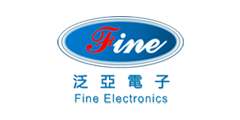A Brief Introduction to the Principle of Use of Inductance Coils

Inductance is the ratio of the magnetic flux of the wire to the current that produces this magnetic flux when alternating current is passed through the wire.
When a DC current passes through the inductor, there are only fixed magnetic lines of force around it, which do not change with time; but when an alternating current is passed through the coil, it will show magnetic lines of force around it that change with time. According to Faraday's law of electromagnetic induction-magnetism generates electricity, the changing magnetic field lines will generate an induced electric potential at both ends of the coil. This induced electric potential is equivalent to a "new power source". When a closed loop is formed, this induced potential will produce an induced current. It is known from Lenz's law that the total amount of magnetic field lines produced by the induced current is to try to prevent the original magnetic field lines from changing. Since the original magnetic field line changes originate from the change of the external alternating power supply, from the objective effect, the inductance coil has the characteristic of preventing the current change in the AC circuit. Inductance coils have characteristics similar to inertia in mechanics. They are called "self-induction" in electricity. Usually, when the knife switch is opened or the knife switch is turned on, sparks will occur. This is the phenomenon of self-induction. Caused by a very high induced potential.
In short, when the inductance coil is connected to the AC power supply, the magnetic field lines inside the coil will always change with the alternating current, causing the coil to continuously produce electromagnetic induction. This kind of electromotive force generated by the change of the coil's own current is called "self-induced electromotive force".
It can be seen that the inductance is only a parameter related to the number of turns, size and shape of the coil and the medium. It is a measure of the inertia of the inductor and has nothing to do with the applied current.
- +1 Like
- Add to Favorites
Recommend
This document is provided by Sekorm Platform for VIP exclusive service. The copyright is owned by Sekorm. Without authorization, any medias, websites or individual are not allowed to reprint. When authorizing the reprint, the link of www.sekorm.com must be indicated.


























































































































































































































































































































































































































































































































































































































































































































































































































































































































